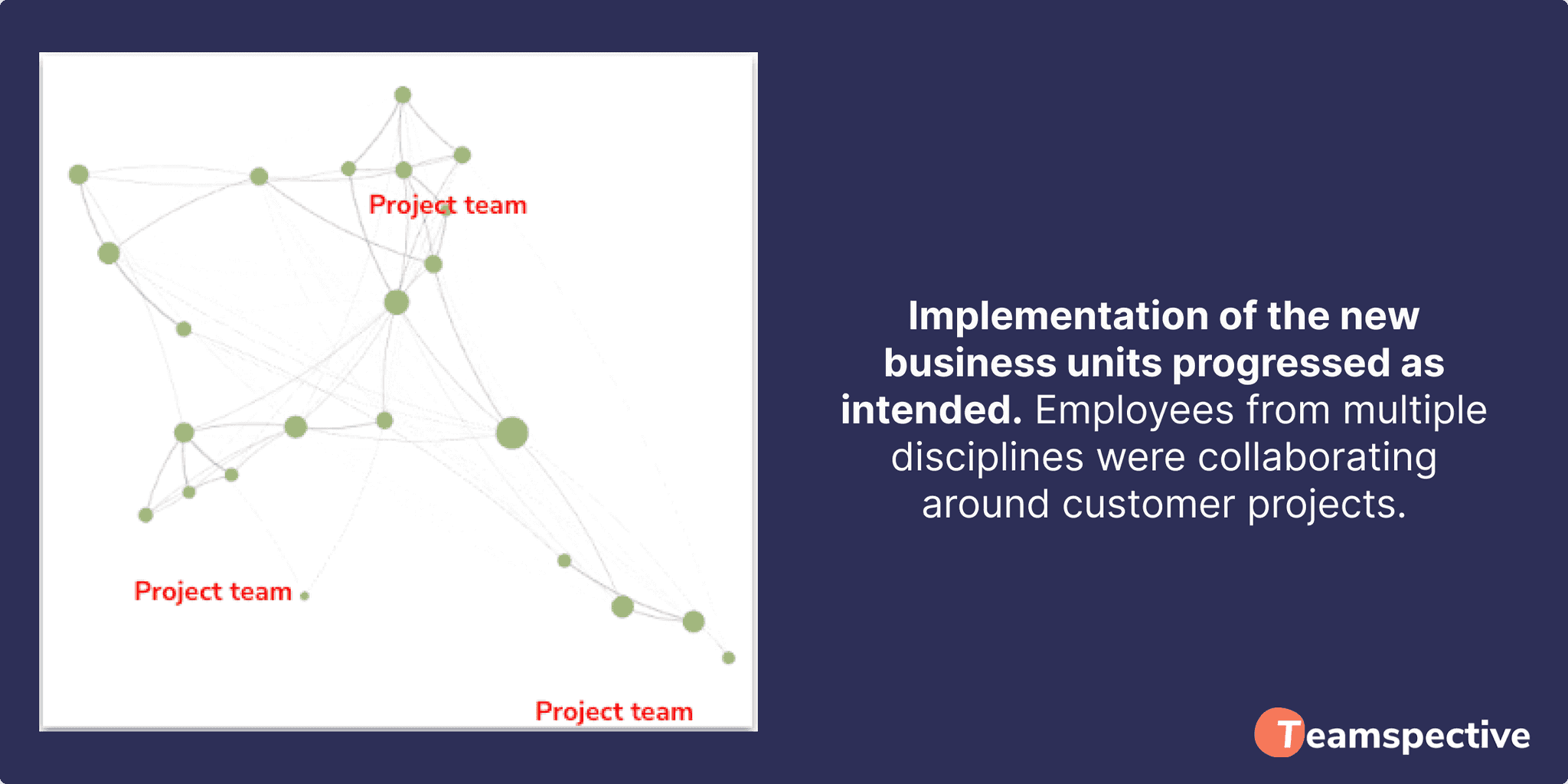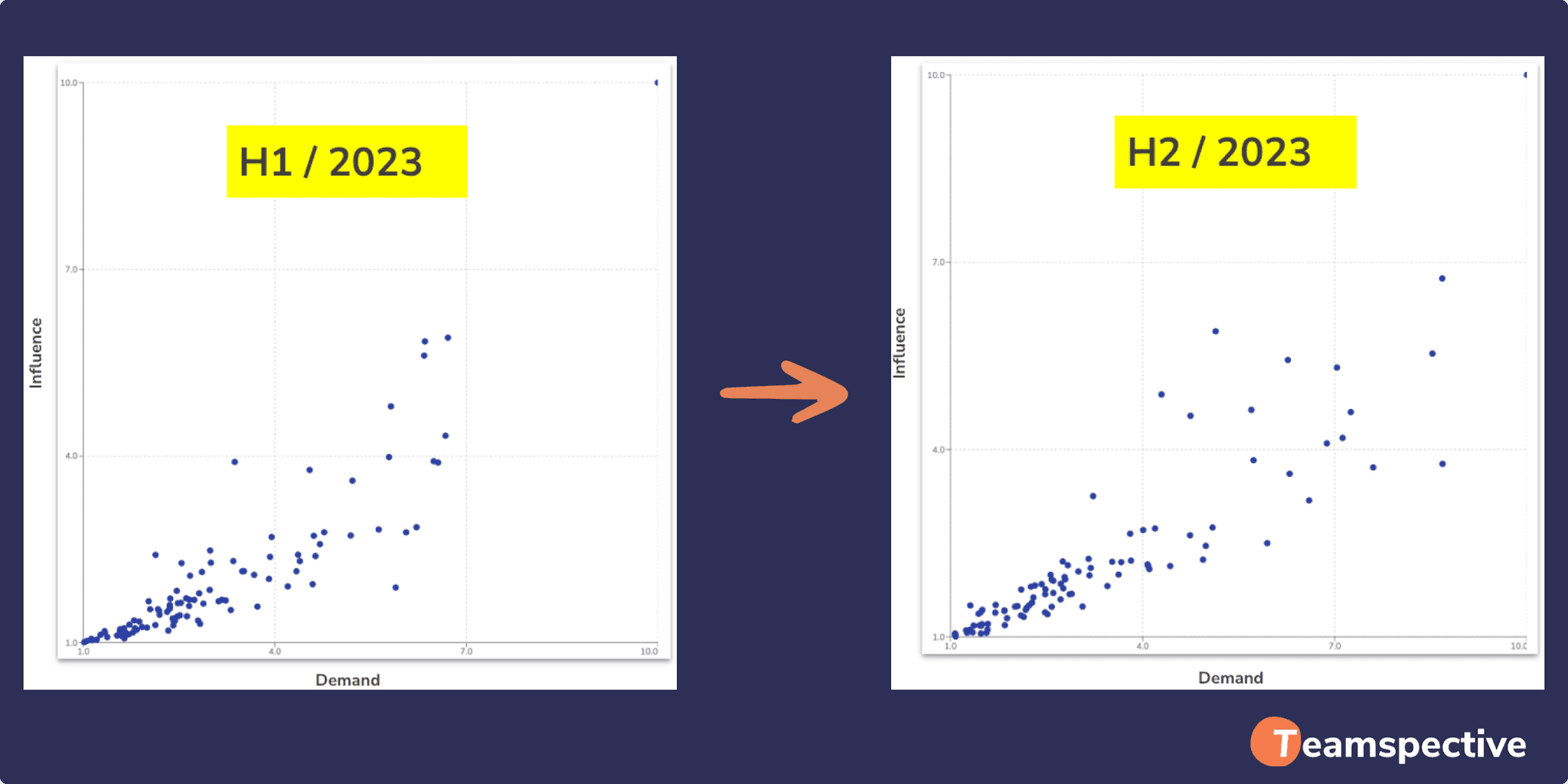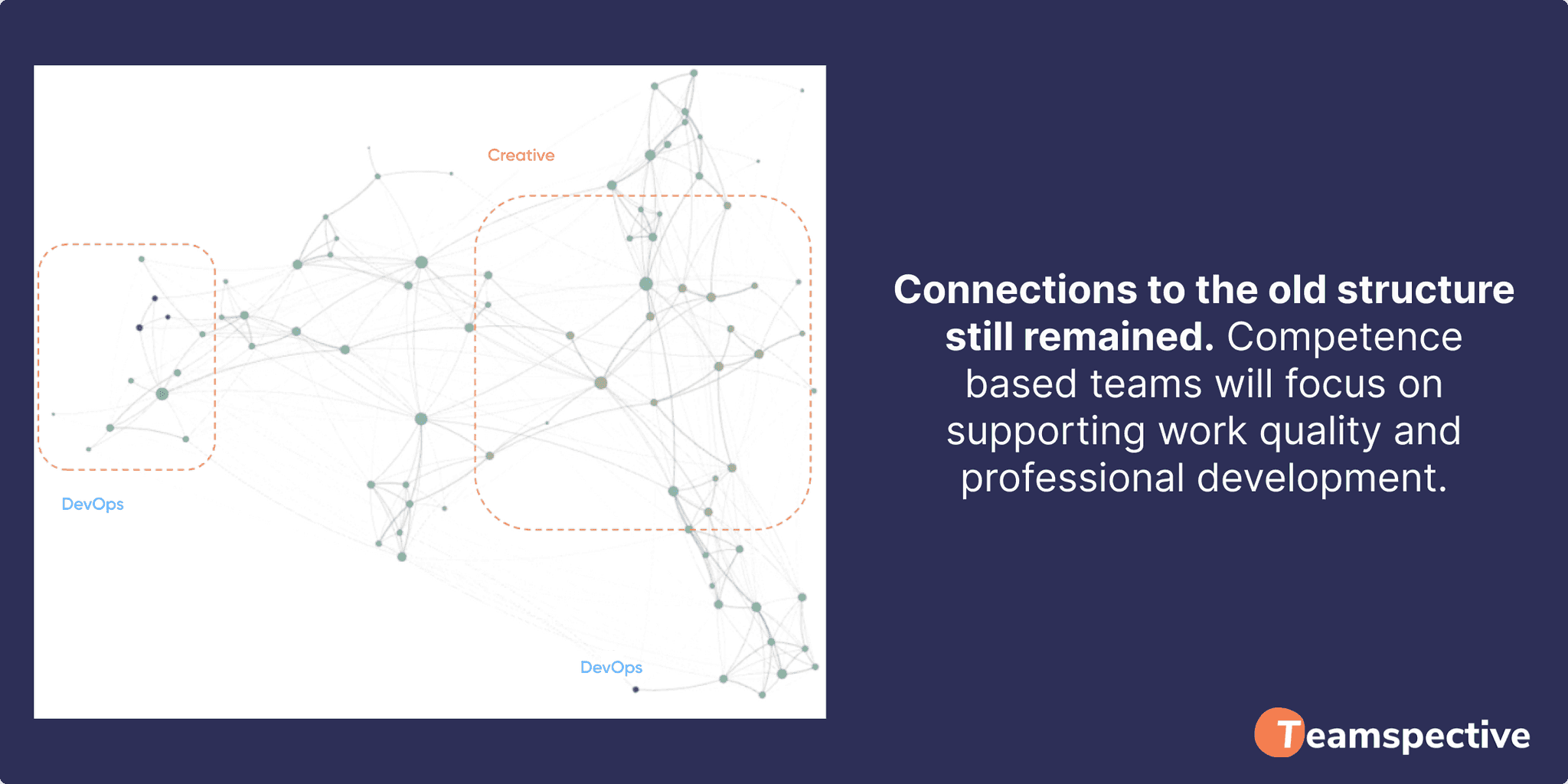Case study
Crasman Ensured Successful Organization Restructuring Using Network Analysis
Crasman is a Finnish online business and digital media pioneer founded in 1996. They specialize in turnkey solutions for online business, covering internal and external communications, commerce, asset management and multichannel marketing. Having built their business through steady success over the years, Crasman now boasts a team of almost 100 professionals across several locations.
Second ONA study revealed the exact effects of the restructuring process
- Implementation of multidisciplinary Business Units was successful
- Changes in roles and responsibilities led to a desired effect: decision-making was split more evenly across the organization
- Connections within the competence groups continued to support professional development
Crasman, a company specializing in digital commerce consulting, design, and implementation, has achieved excellent results in the past years, enabling them to grow to almost 100 experts. However, due to the increase in headcount, their existing processes and structures were no longer supporting the organization as well as they were before.
This is why Crasman chose to restructure the organization with help from Teamspective to ensure that their teams could maintain great collaboration and productivity. The project was a success, resulting in a better performing organization with more empowered employees.
Challenge: How to Speed Up Decision Making and Improve Client Results in a Larger Organization
Crasman’s organization was originally structured around employee competence areas. While the model had served them well in the past, the need for change became apparent when the management team started noticing that decision making speed was slowing down. For example, decision making authority in the organization was moving further away from the people working directly with the customers, lowering the quality of decisions and lengthening lead times.
To ensure successful changes, Crasman wanted to thoroughly understand how their teams worked together. Organizational Network Analysis (ONA) emerged as the ideal solution, providing a clear view of the company's internal collaboration structures. ONA enabled the tracking of both the progress and impact of implemented restructuring changes.
Solution: Using Data to Plan the Reorganization
Planning for the new organizational structure started in August 2022. This included building hypotheses about what kind of structure would work best, and how it would answer the identified development needs. To validate these hypotheses made during the planning stage, Crasman turned to Teamspective.
Crasman completed the first Network Analysis with Teamspective in March 2023. The results increased confidence that the chosen new organizational model was indeed the right one. With the first analysis done, Crasman’s management team confirmed what kind of changes to their organizational structure and ways of working were needed:
- Shifting to multidisciplinary business units around customers, instead of organizing based on employee competencies.
- Creating new leadership roles to support the new organization: business unit directors, creative team managers and developer team managers.
- Keeping the competence teams as a secondary structure to support professional development.
Result: A Better Performing, More Empowered Organization
Eight months after the first network analysis, Crasman had implemented the planned changes. It was time for a follow-up analysis to understand the exact effects of the restructuring and see if new bottlenecks had emerged.
“With ONA we could compare the starting point of the restructuring with the results some months later and see what actually had happened and if the reality matched our expectations.” – Anni Laine, People & Culture Specialist
Improvement #1: New High-performing Business Units
New customer-focused, multidisciplinary Business Units had been formed, so it was important to understand how the new structure was functioning. From the analysis, Crasman was able to see that implementation had succeeded. Employees from multiple disciplines were collaborating around customer projects and decision making was more focused on solving customer problems.
“The ONA process itself felt easy for business unit directors. The analysis helped them to have an overall picture of their own unit and the possible bottlenecks there. It also helped them to direct and provide leadership on an individual level.” – Samuli Hokkanen, CEO at Crasman
Improvement #2: More Empowered Employees
According to learnings from the first analysis, Crasman’s organization had relied heavily on the CEO and a few other management team members for support and decision making. The restructuring plan included new roles and responsibilities with the intent of sharing the demand and support load more effectively across the organization.
Based on the second analysis, it was clear that the changes in roles and responsibilities had led to a desired effect:
- The organization was now relying more on the people working in new roles for support.
- People working in new roles had assumed increased responsibility and the load between management team members had been distributed more evenly.
- Crasman’s new Business Unit Directors were using their experience and learnings to help teams work together better: clarifying roles, delegating work and learning opportunities. This wasn't just good for their own ownership areas, it’s helped the whole company get better at working together.
Improvement #3: Peer-support within Competence Groups Continued
The newly formed Business Units had clearly taken precedence over the competence based structure. Employees with different disciplinary backgrounds were working more actively together and, most importantly, closer to the customers. However, connections to the old structure still remained and especially individuals belonging to the Creative competence teams continued to share strong connections.
Crasman’s management team considered competence based connections necessary in supporting the work quality and professional development. Thus these structures will remain in the organization in some form. However, Crasman will further strengthen the cohesion between the multidisciplinary Business Units to ensure they become the primary collaboration structure.
The Work of Building an Even Better Organization Continues
Although Crasman was very happy with how the reorganization had progressed, it was also clear that they weren’t finished yet. Some parts of the restructuring plan were still in progress, and Teamspective’s Organizational Network Analysis also identified new areas for improvement.
Crasman will continue to focus on the following areas to build an ever more highly-performing organization:
- Refining responsibilities to better support individual wellbeing and more effective leadership in the new Business Unit,
- Properly resourcing new roles,
- Establishing more effective ways of working for the multidisciplinary teams and increasing their cohesion, and
- Establishing correct forums and channels for competence based teams to effectively support the primary, Business Unit focused structure.
Based on the considerable benefits from the first two analysis rounds, Crasman’s management team decided to rerun the network analysis again in 6-8 months. Follow-ups ensure they successfully reach their restructuring goals and keep learning more. What are the new improvement areas that will arise from the next analysis? Have some parts of the initial restructuring plan become redundant? These are all questions that the management team will look to answer next.
”I think every organization should be interested in how their people are networked and how they collaborate with each other. It's very beneficial to have the actual proof on what's going on, what are the bottlenecks, and where there is room for improvement.”



